
![]()
Play Music
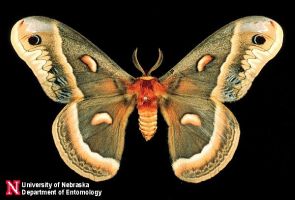

![]()

|
Photo by Jim
Kalisch
Department of Entomology, University of Nebraska-Lincoln |
|
Cecropia Moth Information Cecropia Moth Links |
|
Cecropia
caterpillars create a double walled cocoon.
This means that it first spins and outer shell and
then spins an inner portion of the cocoon.

Mrs. Gray brought in our Cecropia cocoons on
April 25. They are the large brown ones.
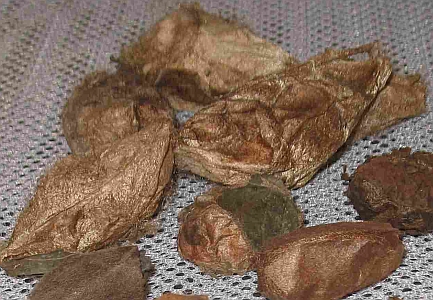 Our cecropia moths have emerged They are huge and beautiful. 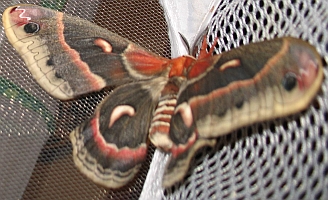 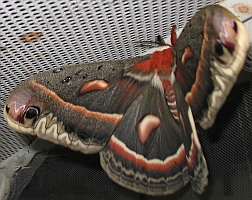 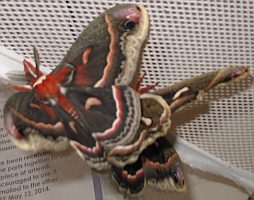 All three kinds of silkmoths have emerged.  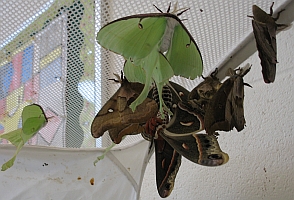 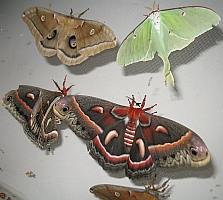
|
|
Cecropia silkmoth (Hyalophora
cecropia) or Robin Moth
Cecropia's range is the eastern half of the US. From mid-Texas to Florida to Maine to Minnesota. Cecropia moths are our largest lepidoptera with wingspans of of 4 5/16” - 6" or more. Depending on the size of the moth, female Cecropia moths lay approximately 250 - 350 eggs. Cecropia eggs are generally laid out in short rows, often in rows of four. The eggs hatch in about 14-20 days. 
The caterpillars eat box elder
, sugar maple , cherry, plum , apple, alder,
birch, dogwood , willow, lilac, elm, glossy
buckthorn, oval-leafed privet, black walnut. When
Cecropia caterpillars first hatch they are black.
Once they shed to 2nd instar they turn orange. Then
in 3rd instar, the larva are either orange with red
tuberacles, or green with red tuberacles.
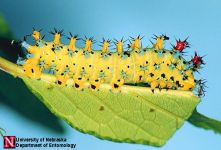
In the 4th and 5th instar they
are green with yellow, red, and blue tuberacles.
Young caterpillars feed in groups on leaves
and older caterpillars tend to eat alone.

Cecropia caterpillars usually attach their cocoons
along a twig of a plant they're feeding on.
Cecropias have only 1 brood a year.The moths
usually emerge from their cocoons in the late
morning. It’s unusual to see one hatch out after 2
pm.

The body of the adult is
red with a white collar and white bands on the
abdomen. The wings are dark brown. The forewings are
red at the base. Crescent spots and the area by the
body are red on all wings. The males are
easily identified by their wide, feathery antennae.
The female has a heavier body and has thinner
antennae. They will almost always mate the first
night.
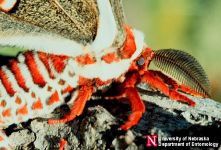
|
|
Cecropia Moth - Life
Cycle |
BACK TO MRS. GRAY'S CLASSROOM PAGE

Send comments and suggestions to: comments@mrsgraysclassroom.org
Please do not copy the graphics
from this Web Site. Many of the graphics are
from copyrighted graphic collections on the
Internet. Please go to our
Graphics Page included in our
Educational Links to visit these great sites
to download graphics.
Updated 05/29/14
Copyright © 2010 Mrs. Gray's
Classroom
All Rights Reserved